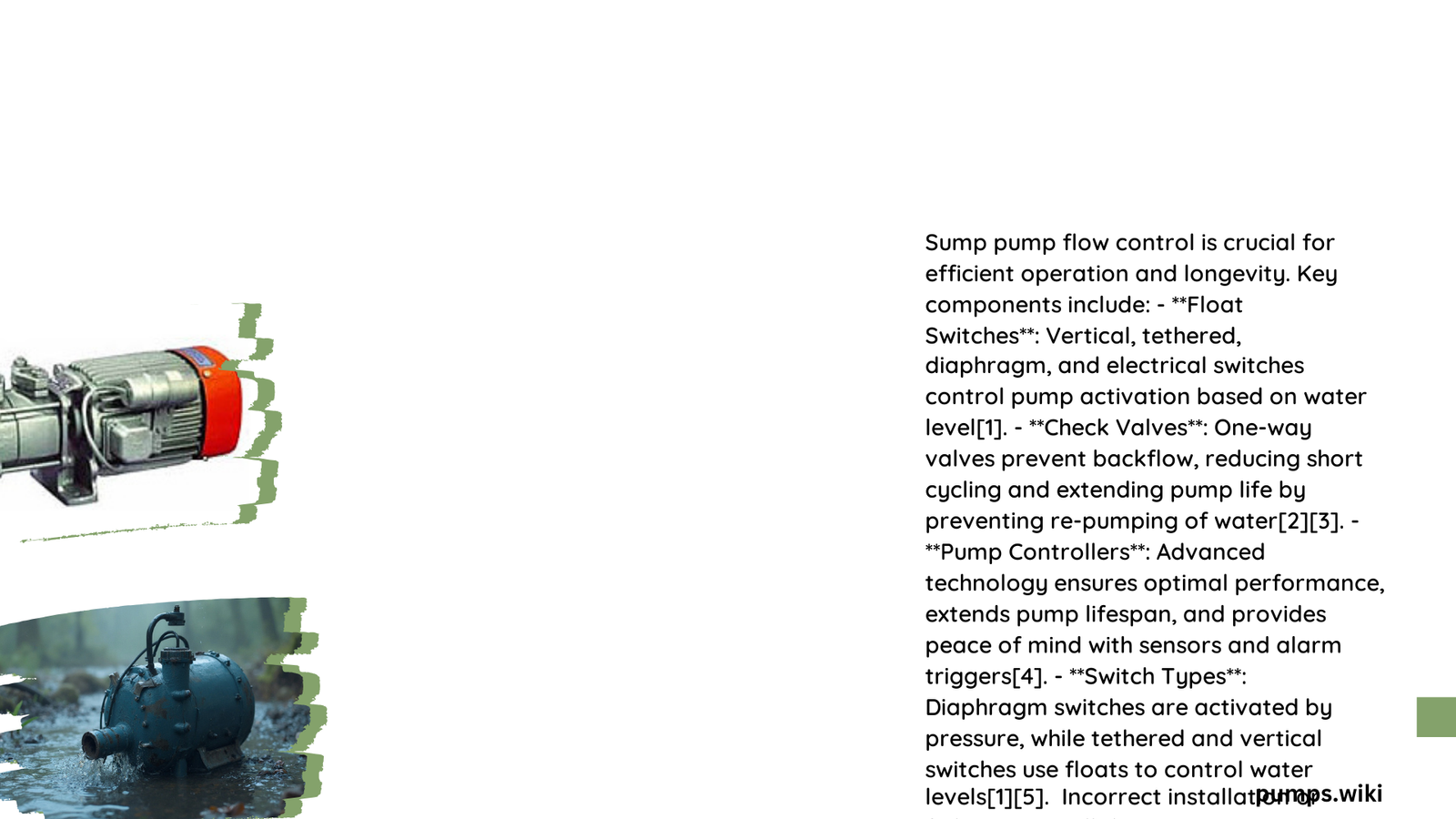Sump pump flow control represents a critical mechanism for managing water levels and preventing basement flooding through precise technological interventions. Homeowners and professionals must understand the intricate balance of sensor technologies, float switch mechanisms, and control systems that enable efficient water removal, protecting residential and commercial structures from potential water damage risks.
What Are the Core Principles of Sump Pump Flow Control?
How Do Float Switches Regulate Water Levels?
Float switches serve as the primary mechanism for sump pump flow control. These devices operate through several critical mechanisms:
- Vertical Activation: Rises with water level
- Electrical Trigger: Activates pump when specific height reached
- Sensitivity Range: Typically 1-48 inches of water column
Float Switch Performance Metrics
| Switch Type | Activation Speed | Reliability | Installation Complexity |
|---|---|---|---|
| Tethered | Moderate | Medium | Low |
| Vertical | Fast | High | Medium |
| Diaphragm | Immediate | Very High | High |
What Determines Optimal Flow Rates?
Flow rate determination depends on multiple factors:
- Pump Horsepower
- Vertical Lift Distance
- Basin Diameter
- Water Volume
Typical residential sump pumps range between 30-50 gallons per minute (GPM), with variations based on specific environmental conditions.
How Do Sensors Enhance Flow Control?
Modern sump pump systems incorporate advanced sensor technologies:
Ultrasonic Sensors
- Measurement Range: Up to 5 meters
- Accuracy: ±1-2 millimeters
- Non-contact measurement
Pressure Sensors
- Submersible Design
- High Precision: ±0.1% full scale
- Robust Performance
What Are Installation Considerations?
Critical installation factors include:
- Proper Basin Sizing
- Electrical Compatibility
- Sensor Placement
- Drainage Angle
- Backup Power Systems
Cost and Maintenance Implications
Sensor Cost Range:
– Basic Sensors: $50-$200
– Advanced Systems: $500-$2,000
Maintenance Recommendations:
– Annual professional inspection
– Quarterly float switch testing
– Regular debris removal
– Battery backup verification
Technical Performance Indicators
Key performance metrics include:
- Minimum Run Time: 1-2 minutes
- Activation Differential: 6-12 inches
- Response Latency: <0.5 seconds
Expert Recommendations

Professionals suggest:
– Choose sensors with multiple failsafe mechanisms
– Implement redundant control systems
– Consider environmental variability
– Invest in quality components
Advanced Flow Control Strategies
- Predictive Water Management
- IoT Integration
- Machine Learning Algorithms
- Real-time Monitoring
Technical Specifications Snapshot
- Typical Flow Rate: 30-50 GPM
- Vertical Lift: 10-25 feet
- Power Requirements: 110V/220V
- Sensor Accuracy: ±1-2 mm
Emerging Technologies
Future sump pump flow control systems will likely incorporate:
– AI-driven predictive maintenance
– Wireless connectivity
– Enhanced energy efficiency
– Self-diagnostic capabilities
Conclusion
Effective sump pump flow control requires understanding complex interactions between mechanical, electrical, and environmental systems. Continuous technological advancements promise increasingly sophisticated water management solutions.
